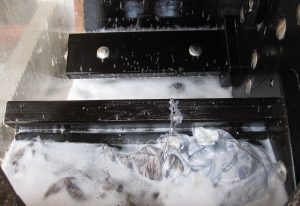What exactly is tanning?
First things first, let’s talk about leather tanning itself, which is in its essence, transforming animal skins into actual leather. The transformation of animal skin into a piece of leather is primarily achieved by removing water molecules from the collagen of the skin, (which is the protein that the skin consists of).
However when drawing out the skin might get ruined, as it gets dry and inflexible. Hence, since ancient times, (literally for thousands of years), people have been soaking the skins in natural tannings to dehydrate the leather, which replaces the water molecules and binds with the collagen, preventing the part where the leather goes stiff and inflexible! These vegetable tanning solutions are made up of organic substance present in trees (such as oak, chestnut or mimosa), or a large number of other types of trees and plants.

Pros with vegetable tanned leather:

- Vegetable tanned leather, using only natural tannins, has no negative environmental impact.
- The tanning method is ancient and requires skilled craftsmen, making vegetable tanned leather products more prestigious.
- Due to the careful tanning process and the natural tannins, vegetable tanned leather develops a rich and beautiful patina, and actually gets better with time and use. It doesn’t crack or dry out and thus has a very long lifespan.
- It has an earthy and natural tone and smell.
Cons:
- Vegetable tanned leather is initially a bit stiff and has to be broken in to become fully flexible and functional.
- The colors from vegetable tanning are not as livid as in chrome tanning and darken over time.
- Vegetable tanned leather takes 30-60 days to produce, making the products generally more expensive.
Pros with chrome tanned leather:

- Chrome tanning is quick and cheap and can be easily automated and achieved in one single day. Chrome tanned products are thus cheaper and more abundant than vegetable tanned leather products.
- The colors of the leather remain unchanged during the product’s entire lifespan.
- It is thinner and softer than vegetable tanned leather.
Cons:
- The process of chrome tanning creates toxic wastewater that has a detrimental environmental impact, (especially in the third world).
- Chrome tanned products neither wears well nor lasts very long and can crack after a few months of use.
- Chrome tanned products don’t appear very natural and often carries a chemical smell.

Final verdict
A vegetable tanned leather will get suppler to the touch and better with use, but a chrome tanned leather product’s development will only go in one direction: towards deterioration. That is why we think vegetable tanned leather is far superior to chrome tanned leather.




